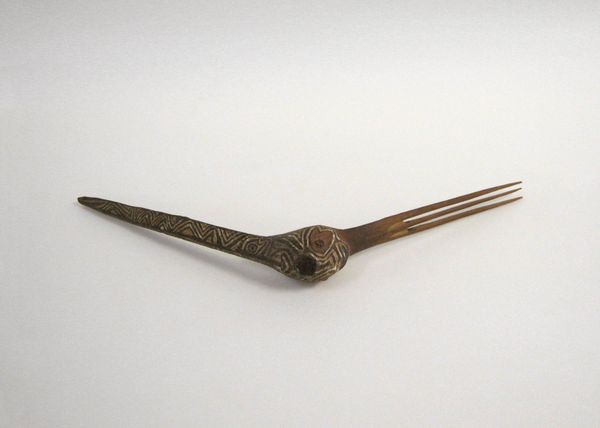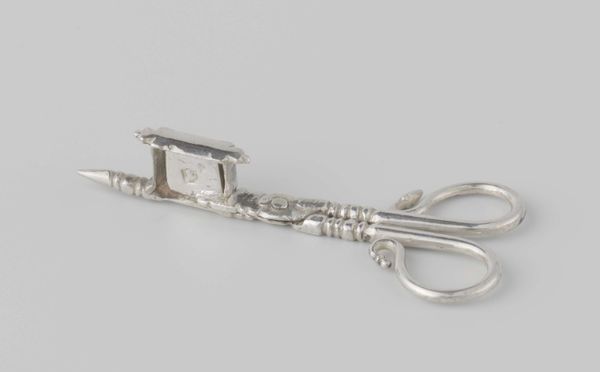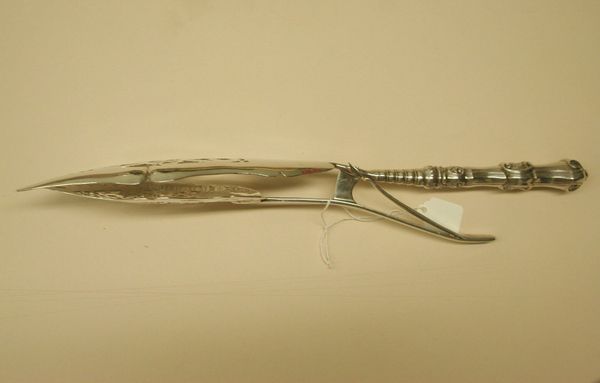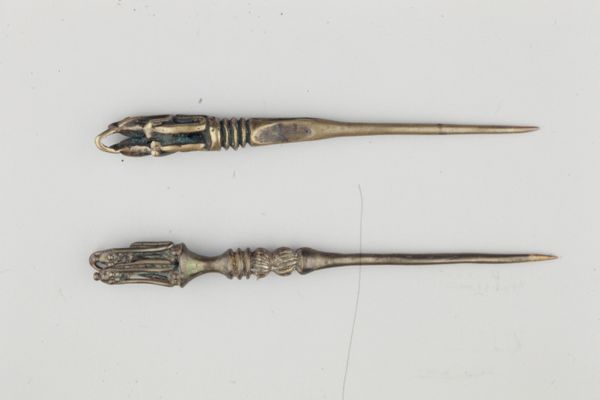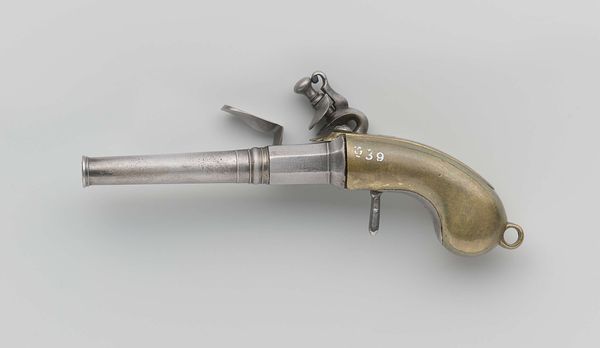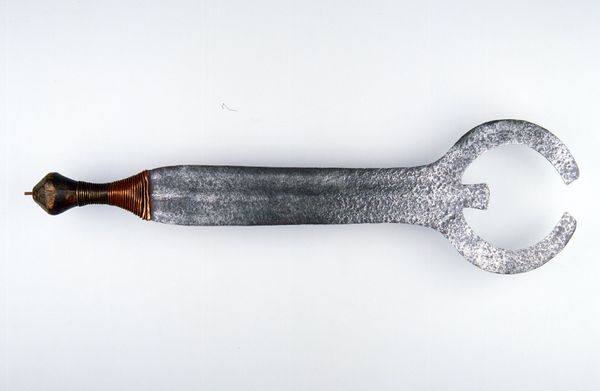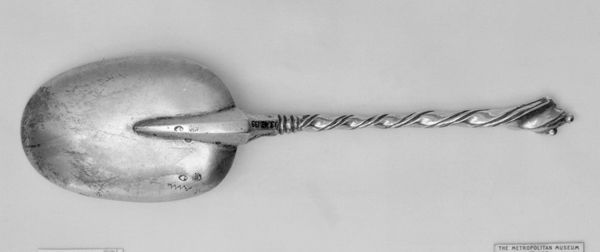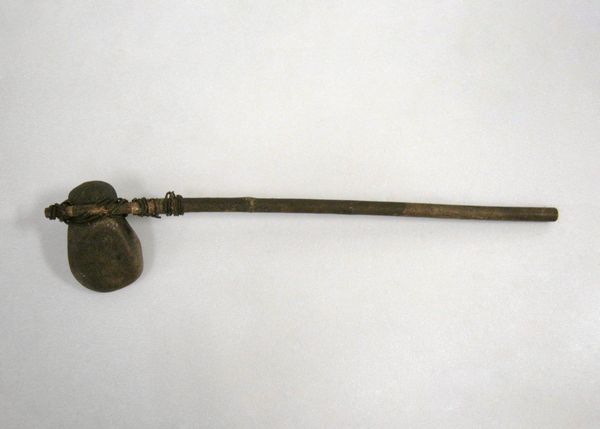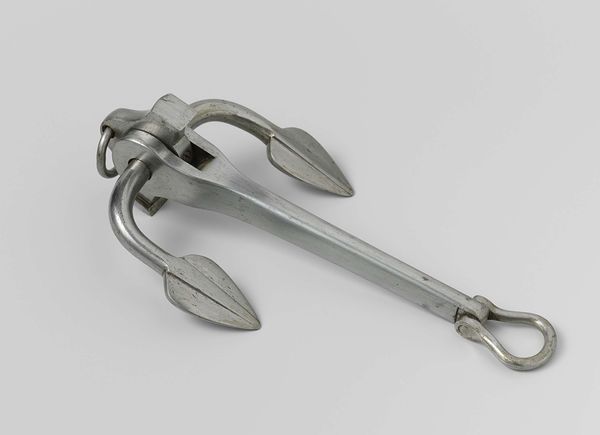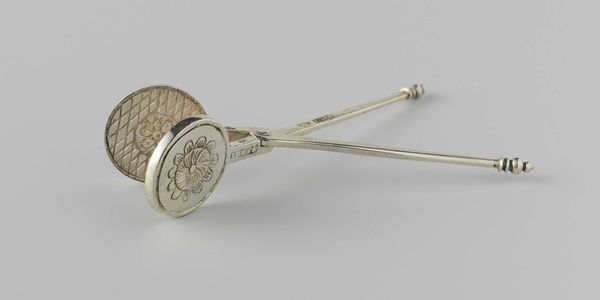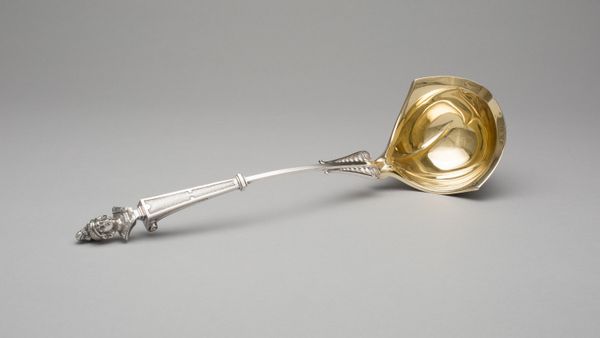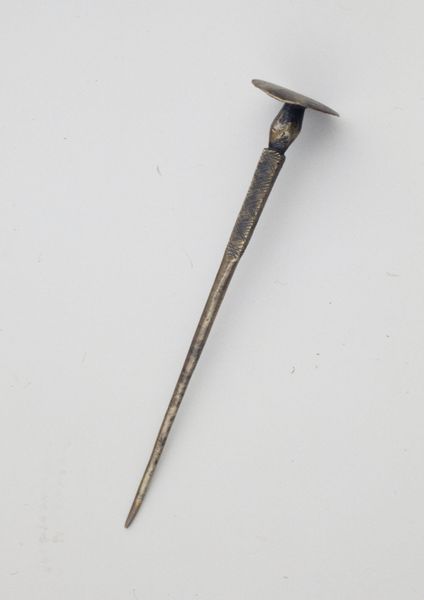
silver, metal, metalwork-silver, sculpture
#
silver
#
baroque
#
metal
#
metalwork-silver
#
sculpture
#
decorative-art
Dimensions: Overall: H. 1 x W. 8 x D. 1 7/8 in. (2.5 x 20.3 x 4.8 cm)
Copyright: Public Domain
Curator: Well, here we have an object of practical elegance—a pair of snuffers crafted between 1738 and 1750 by Friedrich Schwestermuller II. It’s currently residing here at The Met. The materials used are primarily silver and other metals, indicative of the baroque era's decorative flair. Editor: My first impression is of austerity despite the material. There’s a coolness, almost a mechanical coldness. Though, in miniature, it reminds me somewhat of Brancusi's sculpture – there is that sense of smoothed, streamlined form, somehow both functional and symbolic. Curator: The Baroque style truly shines here. Think about the societal context: snuff taking was very fashionable in the 18th century among the upper classes. Objects like these weren’t mere tools; they signaled status, sophistication, and cultural refinement. Snuff and items associated with snuff are a reflection of wealth and class in a time of huge social stratification. Editor: And who are those excluded from the sphere of elegance implied here? Luxury has such fraught and embedded relations to labor and identity. Considering Schwestermuller, as the creator, how can we know about his identity and role in society, even? The tool itself speaks volumes, but whispers silently about those unspoken laborers in other colonial economies who facilitated its user's habit and enjoyment. Curator: We do know a good amount about the workshop and the guild system prevalent at the time, that's one of the great benefits of historical scholarship. The snuffers probably reflects Schwestermuller’s mastery, as well as the expectations and tastes of his affluent clientele. The rising merchant classes wanted pieces to validate and display social position. These snuffers serve not just a practical function but operate performatively. Editor: And how do we reckon with the normalising role that an artwork can have, especially now displayed in an institution like The Met, in either promoting or obfuscating a colonial reality. Curator: Precisely! It brings into sharp focus the dual existence of decorative arts: symbols of status, but also objects reflecting cultural values and anxieties of their time. Editor: This examination really has underscored, for me, how much weight is packed into the innocuous form of this objet d'art. Curator: Agreed. There are definitely some potent lessons embedded in its materiality.
Comments
No comments
Be the first to comment and join the conversation on the ultimate creative platform.
